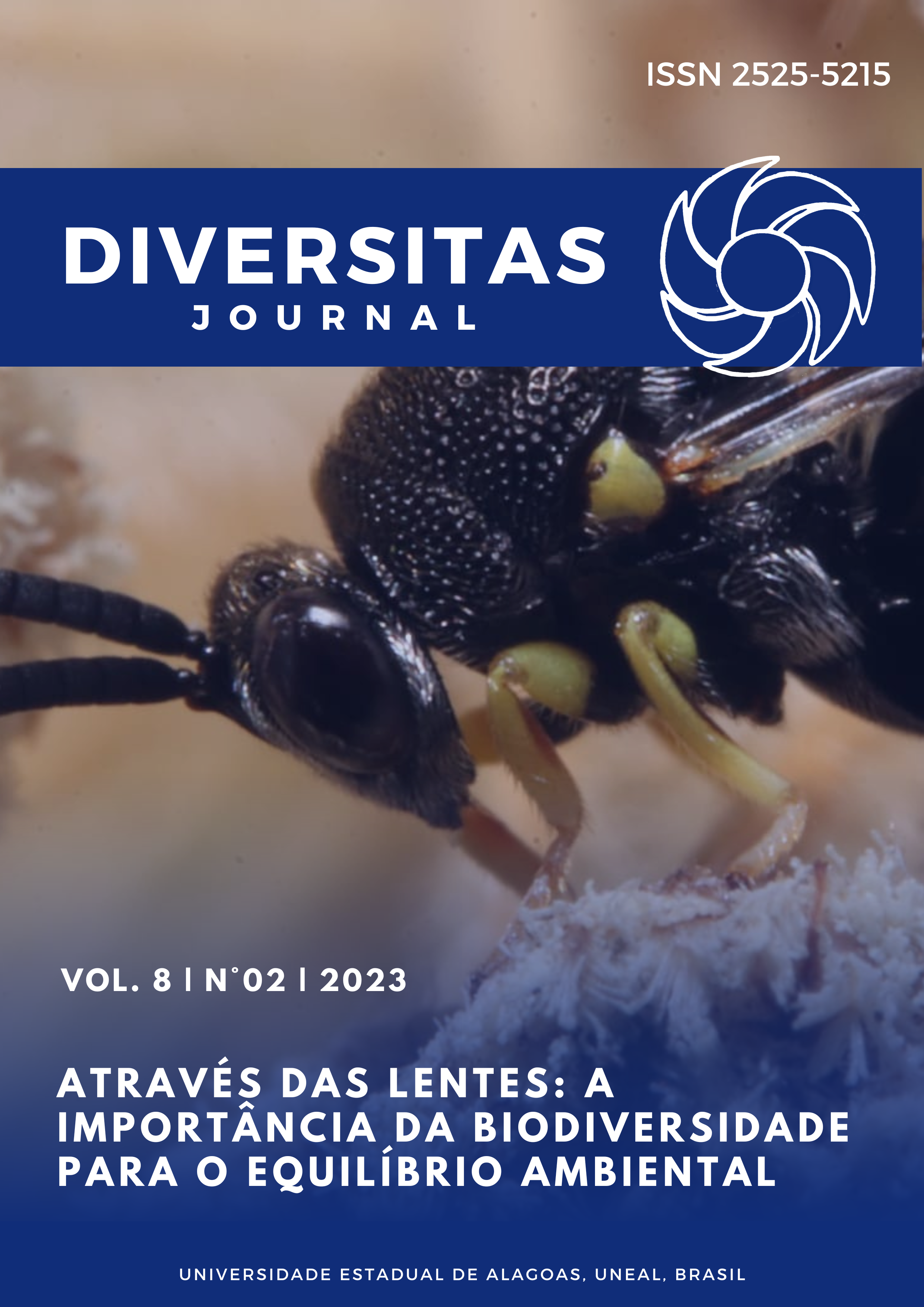Application as assistive technology: a inclusion of environmental science teaching in special education
DOI:
https://doi.org/10.48017/dj.v8i2.2468Keywords:
Inclusive Education, Remote Learning, Vegetable gardenAbstract
Educational inclusion has been overcoming barriers in the face of the challenge of achieving equal education for all. Disabled children must live with other typical children from an early age, this brings benefits not only to themselves, but also to other children at school. With the objective of developing an application as an assistive technology tool in the teaching of Environmental Sciences, this research finds in its path several forms of reflection on education, especially in the Teaching of Environmental Sciences, going through some themes to reach the utopia that is the inclusion of inclusive education students in the school in a cooperative way, with the management of natural resources involved in a vegetable garden, with activities aimed at sustainable actions to improve the environment in which they live and their well-being. Based on an applied research of an exploratory nature with a qualitative approach developed at Escola Cônego Eugênio Vilanova, Gravatá- PE, the application “Minha hortinha” developed on the Fábrica de Applications platform provides content and interactivity about gardening, recycling, water saving, literacy and inclusion. And since inclusive education in schools has been a challenge for teachers, who mostly have difficulties working with students with global developmental disorders, high abilities and disabilities, with a limitation of digital tools, the developed application brings in an interdisciplinary way, various activities adapted for students of Elementary School - Early Years.
Metrics
References
Almeida, A. B., Almeida, A., B., & Fridrich, G. A. (2021, 30 Dezembro). Pedagogical practice with school garden in science and biology. Environmental Smoke, v.4, (nº3), pp.14-23. https://doi.org/10.32435/envsmoke.20214314-23
Base Nacional Comum Curricular. (2018). Educação é a base. Ministério da Educação. http://download.basenacionalcomum.mec.gov.br/
Blanco, R., & Duck, C. (1997). A integração dos alunos com necessidades especiais na região da América Latina e Caribe: situação atual e perspectivas. In M. T. E. Mantoan, A integração de pessoas com deficiência: contribuições para uma reflexão sobre o tema. Memnon Editora SENAC, v.1, pp. 184-195.
Borges, W. F., & Tartuci, D. (2017, 02 Fevereiro). Tecnologia assistiva: concepções de professores e as problematizações geradas pela imprecisão conceitual. Revista Brasileira de Educação Especial, v.23, (nº1), pp., 81-96. https://doi.org/10.1590/S1413-65382317000100007
Carvalho, M. A. A. S., Durand, V. C. R., & Melo, P. D. (2016). A acessibilidade na escola como direito à educação: o que falam os estudos empíricos nacionais? Revista Principia, (nº29), pp. 61-68.
Constituição Federal da República Federativa do Brasil. (1988).
http://www.planalto.gov.br/ccivil_03/constituicao/constituicao.htm
Conte, E., Ourique, M. L. H., & Basegio, A. C. (2017, 26 Julho). Tecnologia assistiva, direitos humanos e educação inclusiva: uma nova sensibilidade. Educação em Revista, (nº33), pp.163-600. https://doi.org/10.1590/0102-4698163600
Costa, L. F. (2011). Novas tecnologias e inclusão digital: criação de um modelo de análise. In M. H. S.
Bonilla, & N. L. Pretto, Inclusão digital: polêmica contemporânea. EDUFBA, v.1, pp. 109-126. EDUFBA.
Decreto nº 48.809, de 14 de março de 2020. Medidas restritivas temporárias adicionais para enfrentamento da emergência de saúde pública de importância internacional decorrente do coronavírus. https://www.legisweb.com.br/legislacao/?id=390762
Fundo Nacional de Desenvolvimento da Educação. (2008). Horta escolar ajuda a formar crianças mais saudáveis e conscientes. http://www.fnde.gov.br/acesso-a-informacao/institucional/area-de-imprensa/noticias/item/850-horta-escolar-ajuda-a-formar-crian%EF%BF%BDasmais-saud%EF%BF%BDveis-e-conscientes
Grácio, M. M. C., & Garrutti, É. A. (2005). Estatística aplicada à educação: uma análise de conteúdos programáticos de planos de ensino de livros didáticos. Revista de Matemática e Estatística, v.23, (nº3), pp. 107-126.
Kassar, M. C. M. (2011, 30 Agosto). Percursos da constituição de uma política brasileira de Educação Especial inclusiva. Revista Brasileira de Educação Especial, v.17, (n.1),pp.41-58.
Lavinas, L., & Veigas, A. (2013, Junho). Desafios do modelo brasileiro de inclusão digital pela escola. Cadernos de Pesquisa, v.43, (nº149), pp. 542-569. https://doi.org/10.1590/S0100-15742013000200009
Lei n0 9.394, de 20 de dezembro de 1996. Lei de Diretrizes e Bases da Educação Nacional. http://www.planalto.gov.br/ccivil_03/leis/l9394.htm
Melo, A. F. (2016, 03 Outubro). A inclusão digital na escola para a erradicação do analfabetismo tecnológico. E-Mosaicos - Revista Multidisciplinar de Ensino, Pesquisa, Extensão e Cultura do Instituto de Aplicação Fernando Rodrigues da Silveira (CAp-UERJ), v. 5, (nº10), pp. 21-30. https://doi.org/10.12957/e-mosaicos.2016.26618
Parâmetros para a Educação Básica do Estado de Pernambuco. (2013). Parâmetros Curriculares de Ciências Naturais – Ensino Fundamental. UNDIME PE.
Resolução nº 510/2016, de 7 de abril de 2016. Dispõe sobre a pesquisa em Ciências Humanas e Sociais. http://conselho.saude.gov.br/resolucoes/2016/Reso510.pdf
Santos, V., Grabowski, G., & Schmitt, J. L. (2021, 17 Agosto). Análise da realização de Educação Ambiental em uma rede pública de ensino: contribuições de um modelo permanente e coletivo. HALAC - Historia Ambiental Latinoamericana Y Caribeña, v.11, (nº2), pp.432-468. https://doi.org/10.32991/2237-2717.2021v11i2.p432-468
Silva, A. P. L. C. (2006). O lúdico na educação infantil: concepções e práticas dos professores na rede municipal de Campo Grande – MS. Dissertação de Mestrado, Universidade Católica Dom Bosco, Campo Grande, Brasil.
United Nations. (2020). Sustainable development goals. https://sdgs.un.org/
Vigotsky, L. S. (1997). Fundamentos de defectología. Pueblo y Educación.
Downloads
Published
How to Cite
Issue
Section
License
Copyright (c) 2023 José Macio Rodrigues Ribeiro

This work is licensed under a Creative Commons Attribution 4.0 International License.
The Diversitas Journal expresses that the articles are the sole responsibility of the Authors, who are familiar with Brazilian and international legislation.
Articles are peer-reviewed and care should be taken to warn of the possible incidence of plagiarism. However, plagiarism is an indisputable action by the authors.
The violation of copyright is a crime, provided for in article 184 of the Brazilian Penal Code: “Art. 184 Violating copyright and related rights: Penalty - detention, from 3 (three) months to 1 (one) year, or fine. § 1 If the violation consists of total or partial reproduction, for the purpose of direct or indirect profit, by any means or process, of intellectual work, interpretation, performance or phonogram, without the express authorization of the author, the performer, the producer , as the case may be, or whoever represents them: Penalty - imprisonment, from 2 (two) to 4 (four) years, and a fine. ”


















